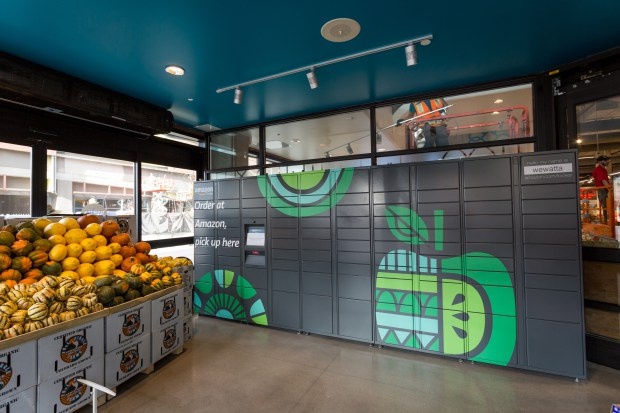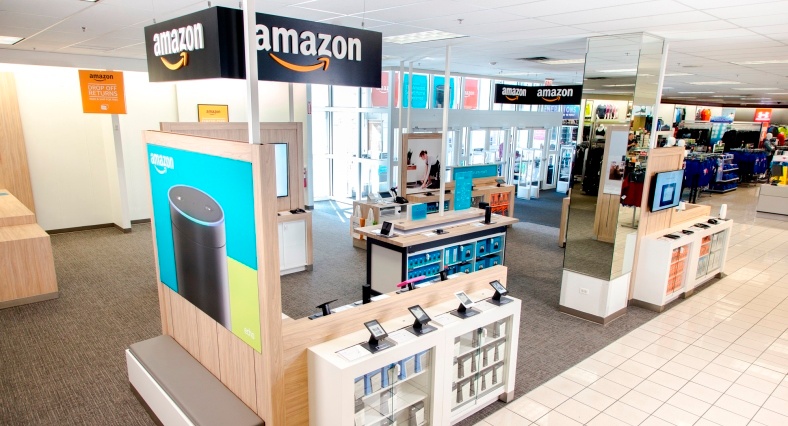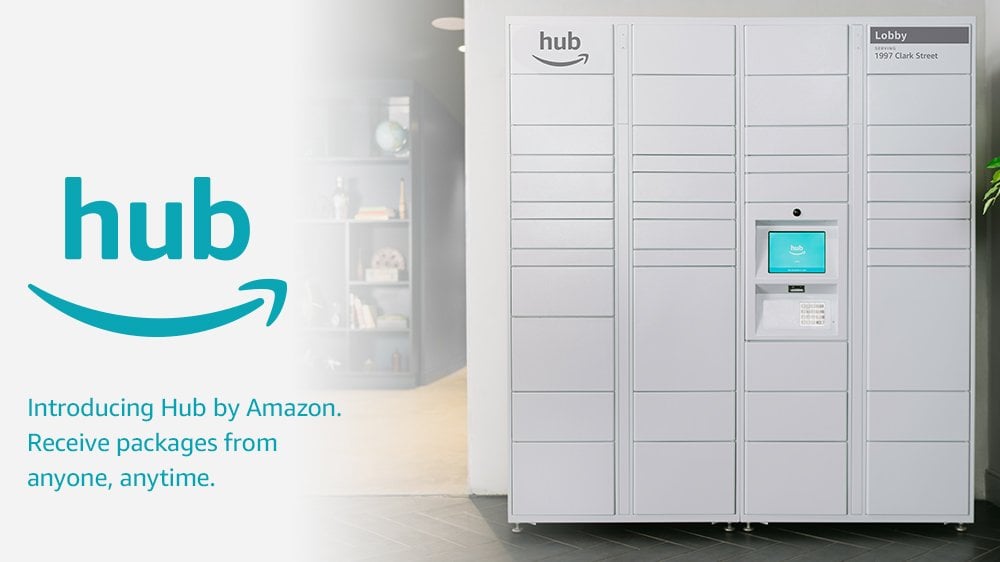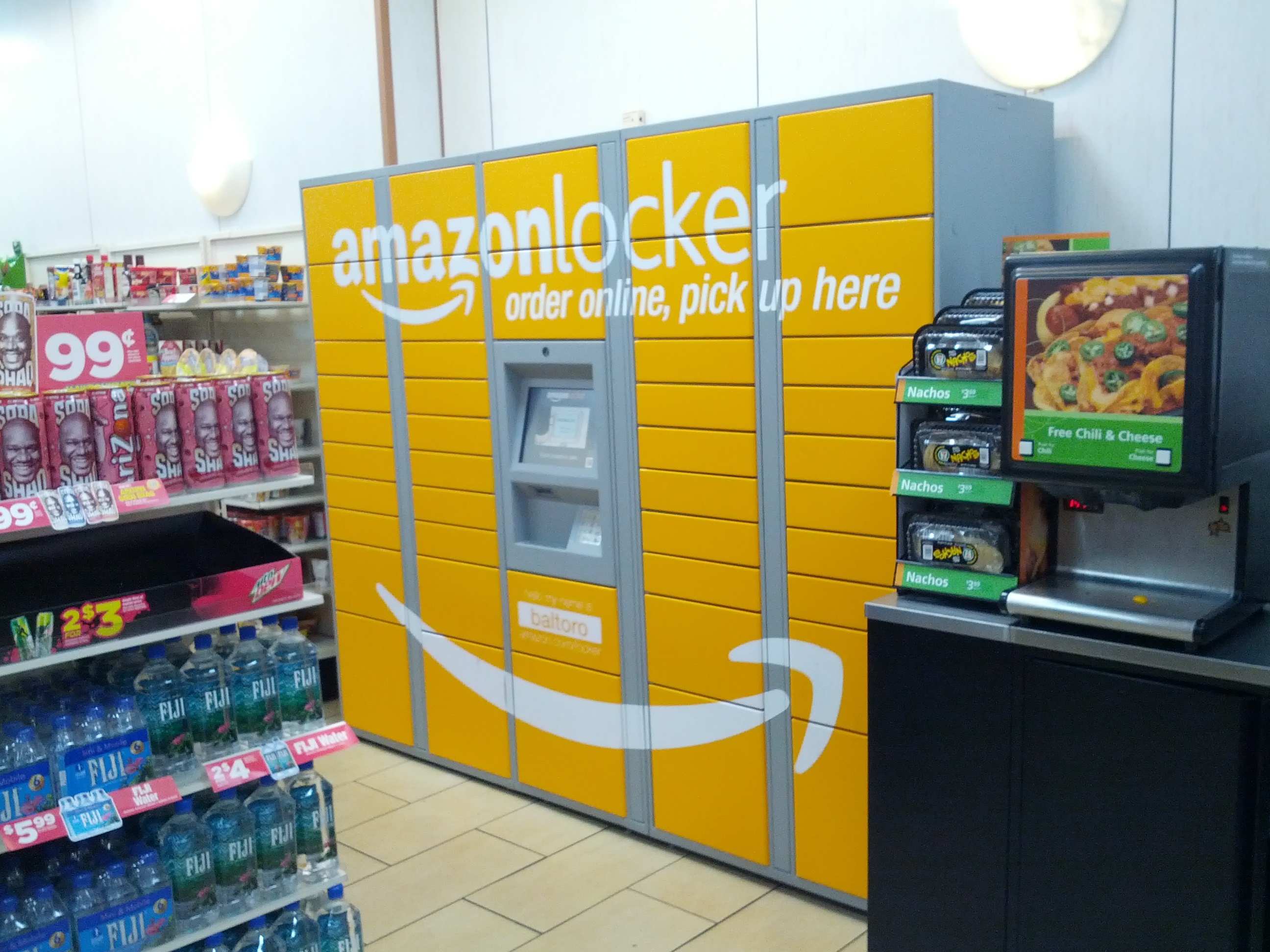These sure are some interesting times in our omnichannel world. Although Amazon is slowly building their own branded brick-and-mortar bookstores, convenience stores, and kiosks, they are also encroaching into other retailers’ brick-and-mortar space, bringing foot traffic to the retailer while expanding their own IRL footprint.
Indeed, such strange times make for some interesting bedfellows. As Amazon develops its zero-checkout convenience store, for example, they are also erecting lockers in hundreds of urban 7-Elevens. As Amazon develops its own private label clothing line and undercuts fashion retailers, they are simultaneously expanding their partnership with Kohl’s, adding return centers and smart home sales floors to the brick-and-mortar Big Box.
For the time being, such twenty-first century symbiosis makes sense for both parties, but as omnichannel becomes the name of the day, and Amazon seems poised to take over the entire world of retail, such partnerships will become less practical. So, let’s climb aboard this Amazon river raft and let the retail market research wash over us as we unlock Amazon’s lockers, explore their next generation of solutions, and speculate what’s around the next river bend.
Putting the Future of Delivery on Lockdown
Amazon lockers are the most ubiquitous manifestation of their IRL aspirations, bridging the digital and the physical. The lockers address delivery pain points for many urban dwellers, namely missed deliveries and stolen packages, while also adding efficiency to Amazon's operations.
Additionally, lockers double as in-person return locations, making the return process smoother, a clear priority of Amazon's. Obviously, the freedom with which one purchases online is directly related to their perception of their freedom to return those purchases. An unbridled return policy leads to more unbridled spending.
Thus, though at least one writer sees lockers and return centers as a harbinger of the apocalypse, they have increased exponentially since their 2012 debut, appearing on college campuses, in grocery and convenience stores, and even in retailers who consider themselves in direct competition with Amazon.
The Retail Whole Stays in the Amazon Family

First, there is Whole Foods, soon to celebrate its paper anniversary with Amazon. Lockers are in 75+ urban Whole Foods stores with plans to expand. When Amazon can drive its customers to such family-branded IRL locations, it is cross-pollinating and driving Prime membership. Indeed, they've driven microvisits (5 minutes or less) up 11% in locker-equipped Whole Foods, 4% more than lockerless locations.
While some might be distressed by such abbreviated business, these numbers make Alexa sing (oh, btw, she does sing and western folksy seems to be her favorite). Such visits are efficient, add up quickly, and perhaps most importantly, reaffirm Prime members' loyalty while keeping their retail and grocery business in-house.
Of Partners, Traitors, and Abettors
But it's not just the Amazon owned brick-and-mortarers firing shots at traditional retailers. There are some third-party brick-and-mortar retail partners (and in the eyes of some legacy retailers: accomplices and traitors) opening up portions of their sales floor to the online mammoth's physical footprint, most famously, Kohl’s.
For such retailers, it is perhaps most instructive to think of lockers and loaned floor space as loss leaders. Sure, stores lose money by not pushing their own inventory in the square footage Amazon occupies, but what good is that inventory if people aren't coming into the store to browse, and, god willing, buy it?
Here's where recent data regarding Kohl's budding partnership with Amazon is instructive: foot traffic is up in locations with Amazon return/smart home centers. What's more, 56% of those visiting Kohl's on an Amazonian errand were first timers, meaning they hadn't been to a Kohl's in over 10 months. And in-store visits last longer at Kohl's that come equipped with their own Bezos Bar.
Of course, traffic isn't sales. So, how are Kohl's and other Amazon partners (looking at you, 7-Eleven) working to capitalize on Amazon's cred?
Well, your humble blogger's recent adventures in just such a Kohl's-featuring-Amazon can fill in some details. First of all, Amazon returns processed at Kohl’s come with a coupon for 25% off one transaction. The coupon is good for seven days, but comes with a looooooooooot of exclusions (Adidas! Under Armour! The vacuum I deserve! The doll dreams are made of!).

So returns come with a Kohl’s coupon, but that coupon is highly limited. It’s as if they don't as much want consumers to use the coupon as to temporarily surrender to their hunter/gatherer impulses and do a quick survey of the store before realizing the coupon's limitations. At least it gets first time visitors familiar with the store. Who knows, maybe during their next Amazon-driven visit, they'll need to use the bathroom? That kinda seems to be the plan: to build, however slowly, relationships with customers who would otherwise not be in their store in the first place.
But that's a slow game at best and a waste of a loss leader at worst. For the record, this blogger's coupon went unused (though the bathroom did not).
Amazon In-Store in a Nutshell
So, while the struggle is real for retailers trying to tap into Amazon’s traffic flow, the calculus for Amazon is much easier to follow. Their products and sales cycle get real-world exposure, making customers feel more tangible connections between the digital and the physical.
And we can already see in their smart home sales floor the beginnings of their own Apple-Store-rival, a place to put their smartest and most salesfloor-friendly employees in the public eye and conversation. When your goal is nothing short of dominating the entire retail world, connecting this sales presence to return centers and lockers just makes good sense.
During the same impromptu in-the-field research adventure, this humble blogger overheard a discussion between one particularly impassioned shopper and an orange-shirted Amazon expert who looked like he was on loan from the Apple Genius Bar (oh, come on you know the type!). Having inquired about the ins and outs of nearly every smart home device and being equally blown away by every response, the shopper, seemingly overwhelmed with the awesomeness of it all, asked, simply, "What other things can I do make my house even more amazing?"
Though she oftentimes has trouble identifying music titles, that overly enthusiastic nutshell right there is music to Alexa's ears and explains everything you need to know about Amazon’s future plans.
Some Partnerships are Forever; This is Not One of those Partnerships
So, how long will these Amazon-inside-Kohl’s and even Amazon lockers last? Hard to say, but something worth considering: beyond Whole Foods, Amazon may not need retail partners for much longer.
They are acquiring an increasing percentage of the last-step delivery options—their HUB centers, built in large apartment and housing complexes, accept delivery from any carrier and sender. No need to go to Kohl’s or 7-Eleven if everything you need is in your basement. And there are already 850,000 of them in the US.

And in France, Amazon is putting lockers into over 900 train stations, serving on-the-go passengers on their commute. With plans to further penetrate consumers’ daily lives outside of traditional retail spaces, it is fair to wonder if such developments are akin to a canary in Kohl’s mine. But it goes both ways, and retailers are now developing their own Amazon-esque systems.
If imitation truly is the highest form of flattery, well, consider Amazon and their lockers really darn flattered. Competitors ranging from Macy's and Nordstrom to The Home Depot and Walmart have all launched their own in-store locker system. Nordstrom's even comes with designated fitting rooms to try on their online purchases.
This makes sense for these players because, even if in-store-pickup of online orders only accounts for a single-digit percentage of retailers' sales, that single-digit percentage is growing very quickly. And they cannot grow at all if legacy retailers do not grow with the times.
And then there is Happy Returns, a VC-funded startup looking to serve as an in-mall general return center for online-only retailers. They additionally match up brick-and-mortar sellers with online-only stores not in competition with one another to offer return centers and delivery pick up. It’s like putting a Bear Bottom Clothing return center inside a Build-A-Bear storefront.
Of course, not every Happy Returns enterprise will have a happy ending, as Amazon continues to define and then redefine every step of retail. That’s why competitors must keep abreast of the omnichannel market research. Alexa may have trouble understanding that term, but Amazon does not.


